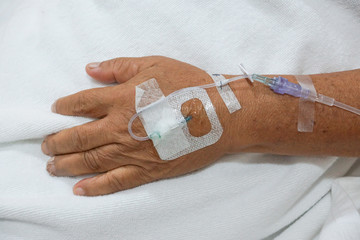Sign in or register for an account.

Peripheral and Central Venous Access Device Review
This course has been designed to provide basic conceptual and operational knowledge to nurses, and other healthcare providers who have had previous “IV Certification” or infusion courses and would like to review the current infusion therapy standards. As the science of infusion therapy advances and technology expands, it is imperative that all healthcare clinicians and nurses practicing infusion therapy remain current in their knowledge of infusion therapies, principles, techniques, equipment and the latest in infusion evidence based practices.
In early 2024, the Infusion Nurses Society (INS), recognized as the global authority in infusion therapy, released the updated Infusion Therapy Standards of Practice. The INS sets the accepted standards for infusion therapy practice for all healthcare settings. This course is based on the current best practices as defined by the Infusion Nursing Society and other governing agencies such as the CDC, and FDA.
Pedagogy has developed skills competency checklists for all infusion related procedures and these are available in the course, for print out and completion with a preceptor.
Questions? Check out our FAQs page and How Online IV Certification Works!
Objectives
Upon completion of this course, the participant will be able to:
- State the agencies that govern infusion therapy practice.
- Demonstrate the correct calculation of an IV flow rate.
- State the appropriate venous access device for the therapy ordered.
- Identify complications of IV therapy; cause, prevention and treatment.
- Identify the various types of central lines and proper procedure steps in the care of these devices.
Curriculum
Chapter 1: Legal Issues
- Regulatory agencies and governing bodies
- Components of a complete order
- Methods of fluid regulation
- Patient considerations in fluid regulation
- External factors that affect the rate of flow
- Calculation of I.V. flow rates
- Hand hygiene
- Sharps management
- Medical waste disposal
- Durable medical equipment disinfection
- Standard precautions
- Transmission-based precautions
- Trans-illuminator technology
- Near infrared technology
- Ultrasound
- Criteria for peripheral access devices
- 3 types of peripheral access and criteria for placement
- Special considerations of the specific age groups
- General considerations of short peripheral access
- Veins to avoid
- Filtration
- Add-on devices
- VAD stabilization
- Joint stabilization
- Site protection
- Flushing and locking
- Assessment, care, and dressing changes
- Pre-insertion procedures
- Peripheral iv insertion
- Primary and secondary administration set-up
- IV push administration
- Catheter discontinuation
- Definition of a central line
- Reasons for use of a central line
- Advantages of a central line
- Overview of central venous access devices
- Lumens
- Non‐valve and valved catheters
- Non‐tunneled catheters
- Tunneled catheters
- Implanted ports
- PICC or peripherally inserted central catheter
- Veins used for placement of central venous access devices
- Catheter tip placement
- Needleless connectors
- Filtration
- Add-on devices
- CVAD stabilization
- Site protection
- Flushing and locking
- Assessment, care, and dressing changes
- Administration set changes
- Blood sampling from a CVAD
- Central venous catheter dressing change
- Needleless access device change
- Central venous catheter flushing
- Blood sampling from a CVAD
- Catheter related complications
- Systemic complications
- Insertion related complications
- Removal of devices
- Central venous access device removal procedure
- Skill competency checklists:
- Medication administration
- Large volume electronic infusion device
- Peripheral I.V. catheter insertion
- I.V. push
- Administration of infusate via an ambulatory infusion pump
- Accessing a port
- Blood specimen collection from a CVAD
- Deaccessing an implanted port
- Midline or central line dressing change
- Needleless connector device change
- California Bill 241
- Implicit Bias in Healthcare
- What is Implicit Bias?
- Implications of Implicit Bias in Healthcare
- How to Reduce Implicit Bias
Price: $90.00
Contact Hours: 7.5

Course Author

Capra Garrison
Course Accreditation
See our Accreditation Statements page to view our accreditation information.